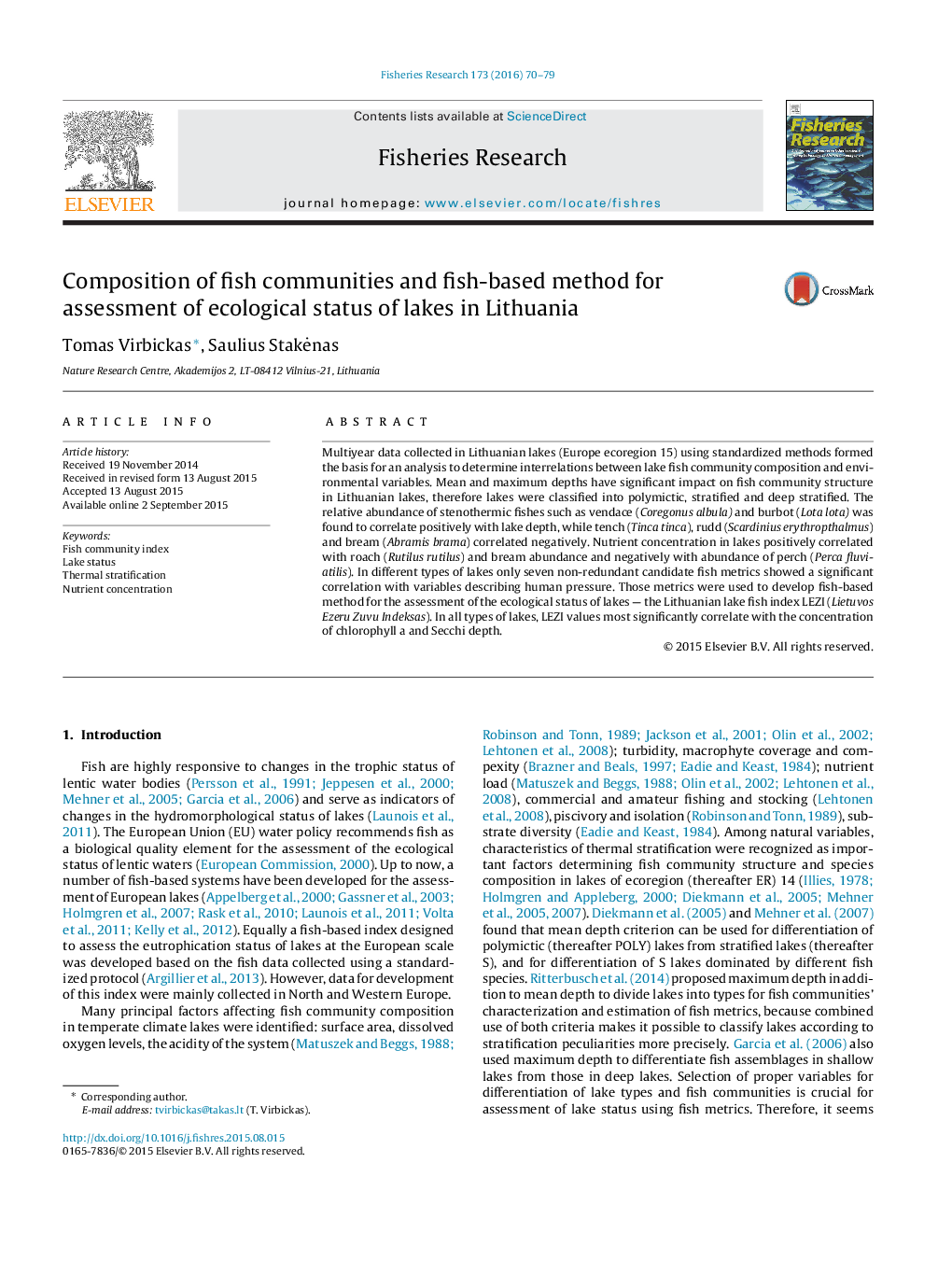| Article ID | Journal | Published Year | Pages | File Type |
|---|---|---|---|---|
| 4542813 | Fisheries Research | 2016 | 10 Pages |
Multiyear data collected in Lithuanian lakes (Europe ecoregion 15) using standardized methods formed the basis for an analysis to determine interrelations between lake fish community composition and environmental variables. Mean and maximum depths have significant impact on fish community structure in Lithuanian lakes, therefore lakes were classified into polymictic, stratified and deep stratified. The relative abundance of stenothermic fishes such as vendace (Coregonus albula) and burbot (Lota lota) was found to correlate positively with lake depth, while tench (Tinca tinca), rudd (Scardinius erythropthalmus) and bream (Abramis brama) correlated negatively. Nutrient concentration in lakes positively correlated with roach (Rutilus rutilus) and bream abundance and negatively with abundance of perch (Perca fluviatilis). In different types of lakes only seven non-redundant candidate fish metrics showed a significant correlation with variables describing human pressure. Those metrics were used to develop fish-based method for the assessment of the ecological status of lakes — the Lithuanian lake fish index LEZI (Lietuvos Ezeru Zuvu Indeksas). In all types of lakes, LEZI values most significantly correlate with the concentration of chlorophyll a and Secchi depth.
